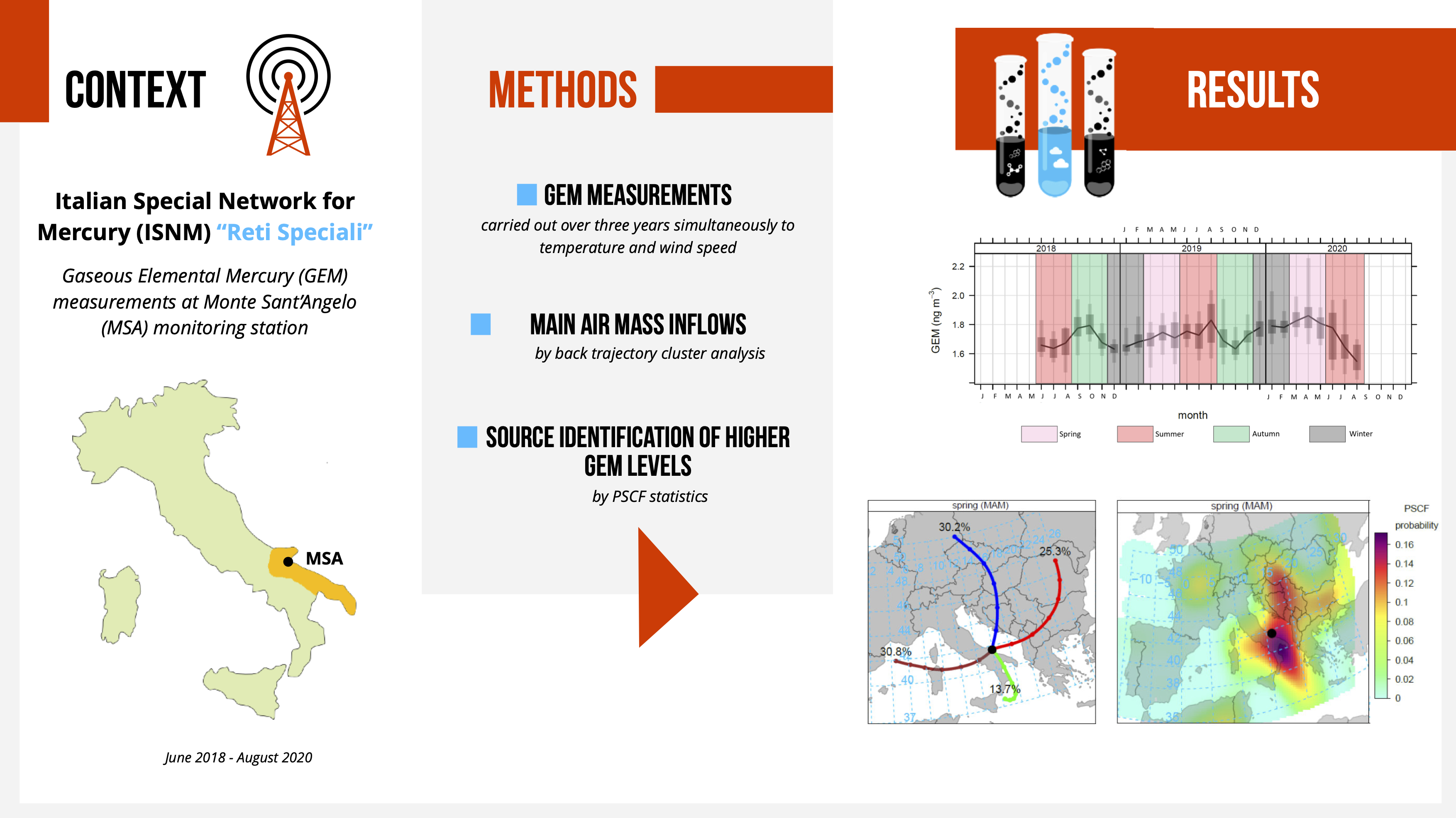DIVULGAZIONE
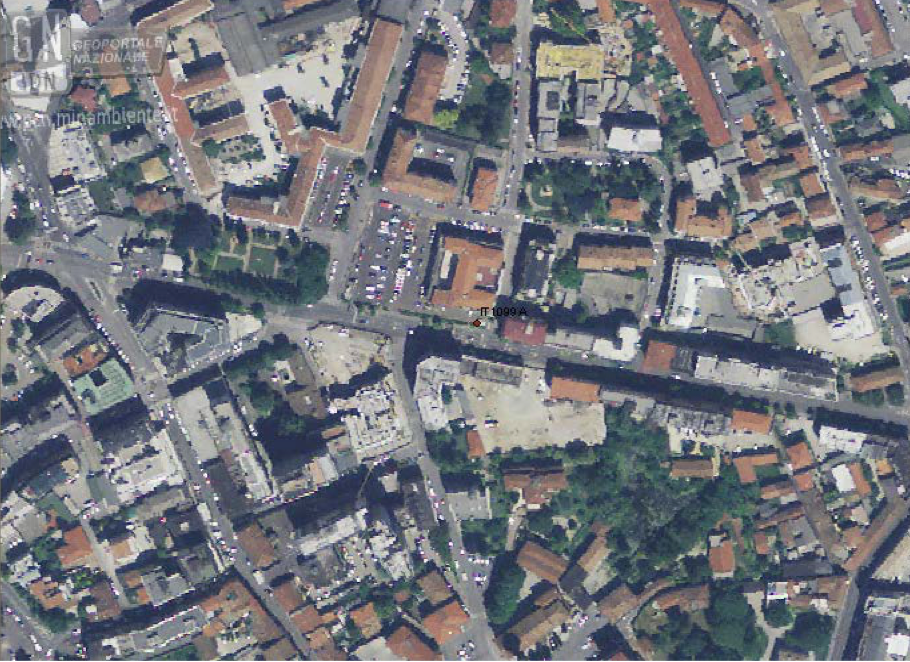
Il progetto Reti Speciali prevede di svolgere studi, basati anche sull’interpretazione dei dati monitorati, e di assicurare la condivisione e la diffusione dei risultati dell’attuazione dell’Accordo verso i soggetti interessati dalle risultanze delle esperienze acquisite (pubblico, comunità scientifica, Ministero della Transizione Ecologica, altre amministrazioni competenti in materia).
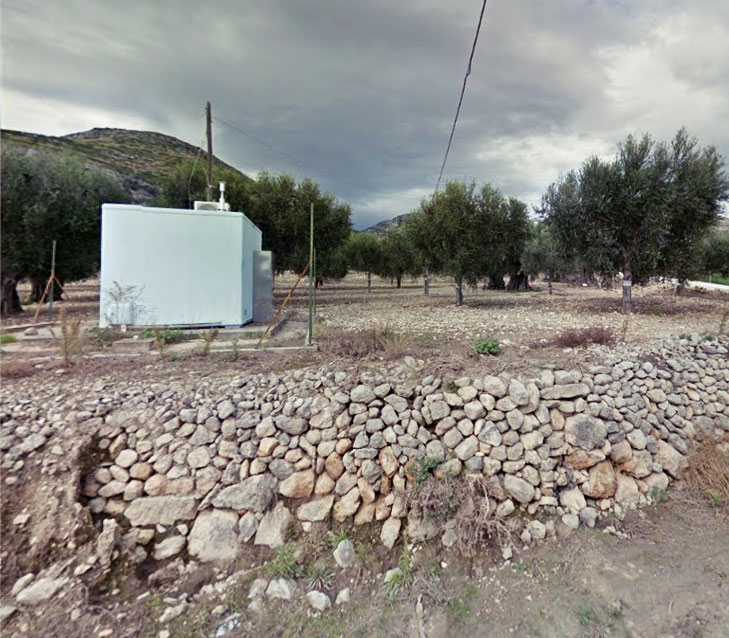
First atmospheric mercury measurements at a coastal site in the Apulia region: seasonal variability and source analysis
Maria Martino, Antonella Tassone, Lorenzo Angiuli, Attilio Naccarato, Paolo Rosario Dambruoso, Fiorella Mazzone, Livia Trizio, Cristina Leonardi, Francesco Petracchini, Francesca Sprovieri, Nicola Pirrone, Francesco D’Amore & Mariantonia Bencardino
Environmental Science and Pollution Research (2022)
https://doi.org/10.1007/s11356-022-20505-6
Abstract
In the framework of the Italian Special Network for Mercury (ISNM) “Reti Speciali”, a sampling campaign to monitor atmospheric mercury (Hg) was carried out at Monte Sant’Angelo (MSA). This is a coastal monitoring station in the Apulia region, representative of the Southern Adriatic area, within the Mediterranean basin. This work presents continuous Gaseous Elemental Mercury (GEM) measurements over about three years at MSA, using the Lumex RA-915AM mercury analyzer. The aim was to obtain a dataset suitable for the analysis of Hg concentrations in terms of source and transport variation. Diurnal cycles of GEM were evaluated to observe the influence of local atmospheric temperature and wind speed on potential re-emissions from surrounding sea and soil surfaces. Data were also analyzed in terms of long-range transport, using backward trajectory cluster analysis. The spatial distribution of potential sources, contributing to higher measured GEM values, was obtained employing Potential Source Contribution Function (PSCF) statistics. The influence of major Hg anthropogenic point sources, such as mining activities and coal-fuel power plants, both regionally and continentally, from mainland Europe, was observed. The role of the vegetation GEM uptake in modulating the seasonal GEM variability was also investigated. The potential of wildfire influence over the highest detected GEM levels was further examined using active fire data and the evaluation of the vegetation dryness index during the selected episodes.
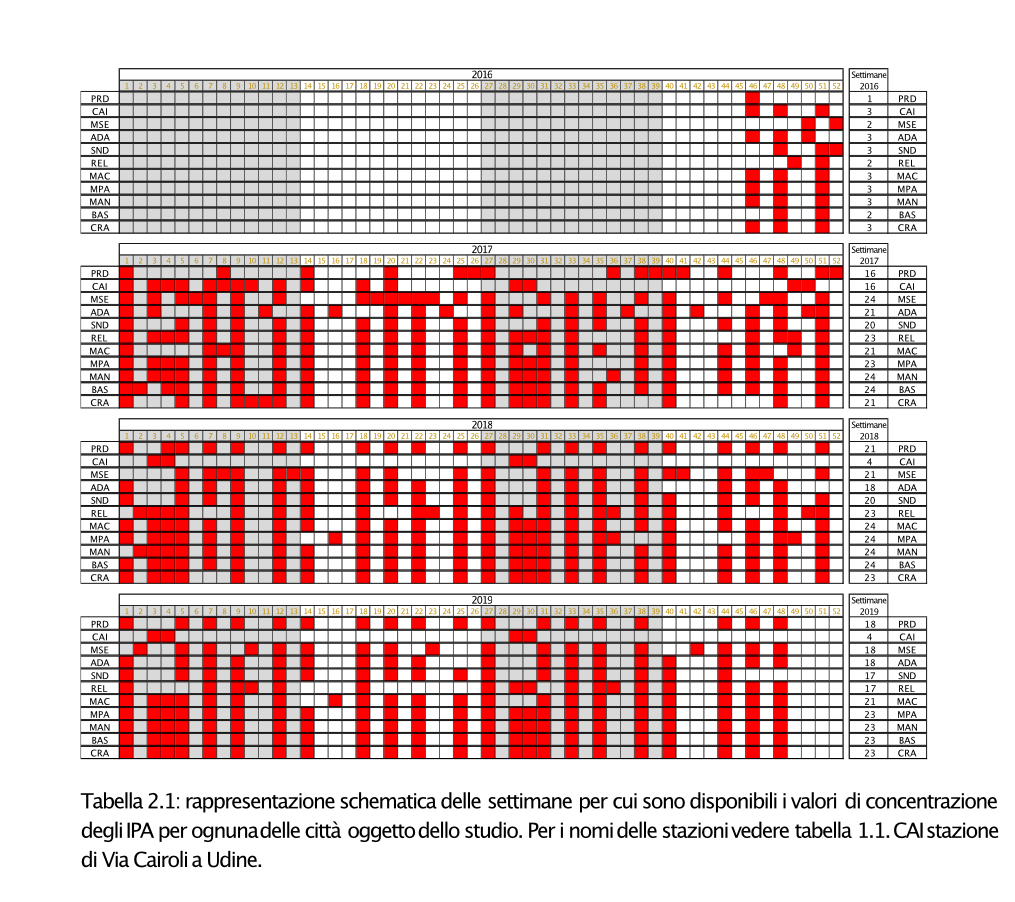


Relazione tecnica relativa all’ Articolo 3 dell’accordo: IPA su PM10 presso 10 siti urbani.
Catia Balducci, Mariantonia Bencardino, Francesco D’Amore, Paola Romagnoli, Marina Cerasa, Cristina Leonardi.
Introduzione
Gli idrocarburi policiclici aromatici (IPA) sono composti costituiti da due o più anelli aromatici condensati contenenti solo carbonio ed idrogeno. Essi possono essere prodotti da sorgenti naturali, come le emissioni vulcaniche, o da sorgenti antropiche. Relativamente alle sorgenti antropiche, il principale processo che porta alla formazione degli IPA è la combustione incompleta di materiale organico, conseguentemente tra le sorgenti più importanti si possono elencare i processi industriali che richiedono l’utilizzo di combustibili fossili o di biomassa, le centrali elettriche a combustibile, il riscaldamento domestico e i trasporti di beni e persone (Lammel 2015). Riguardo questi ultimi, un grosso peso è associato al traffico veicolare, ma anche il traffico aereo e marittimo hanno un ruolo non trascurabile (Ravindra, et al. 2008; Romagnoli et al. 2017; Vichi et al. 2016). L’interesse nei confronti degli IPA è dovuto soprattutto alla loro proprietà tossiche, con particolare riguardo alla cancerogenicità (Kim et al. 2013; Kim, Lee, and Szulejko 2014). I composti più cancerogeni sono quelli costituiti da quattro o più anelli, cioè quelli che si trovano prevalentemente nella fase particolata. Data la grande diffusione degli IPA nell’ambiente e la loro appurata tossicità, esiste la necessità di un loro monitoraggio in tutte le matrici ambientali e tale necessità si è tradotta in obblighi legislativi. In particolare, la legislazione Europea nella Direttiva 2004/107/CE (del 15 dicembre 2004 concernente l’arsenico, il cadmio, il mercurio, il nickel e gli idrocarburi policiclici aromatici nell’aria ambiente), richiede agli stati membri di effettuare la misura degli IPA nel particolato atmosferico con diametro aerodinamico inferiore di 10 μm (PM10). In questo contesto, l’indagine sugli IPA in aria ambiente, svolta nell’ambito del Progetto Reti Speciali, è finalizzata ad individuare le variazioni geografiche e le fluttuazioni a lungo termine delle concentrazioni in aria ambiente dei 7 IPA considerati dalla Direttiva. In particolare, la presente relazione tecnica riporta e discute i dati relativi alle concentrazioni di IPA presenti nel PM10 raccolto nelle stazioni delle Reti Speciali opportunamente individuate dall’art.3 del DM 29 novembre 2012.
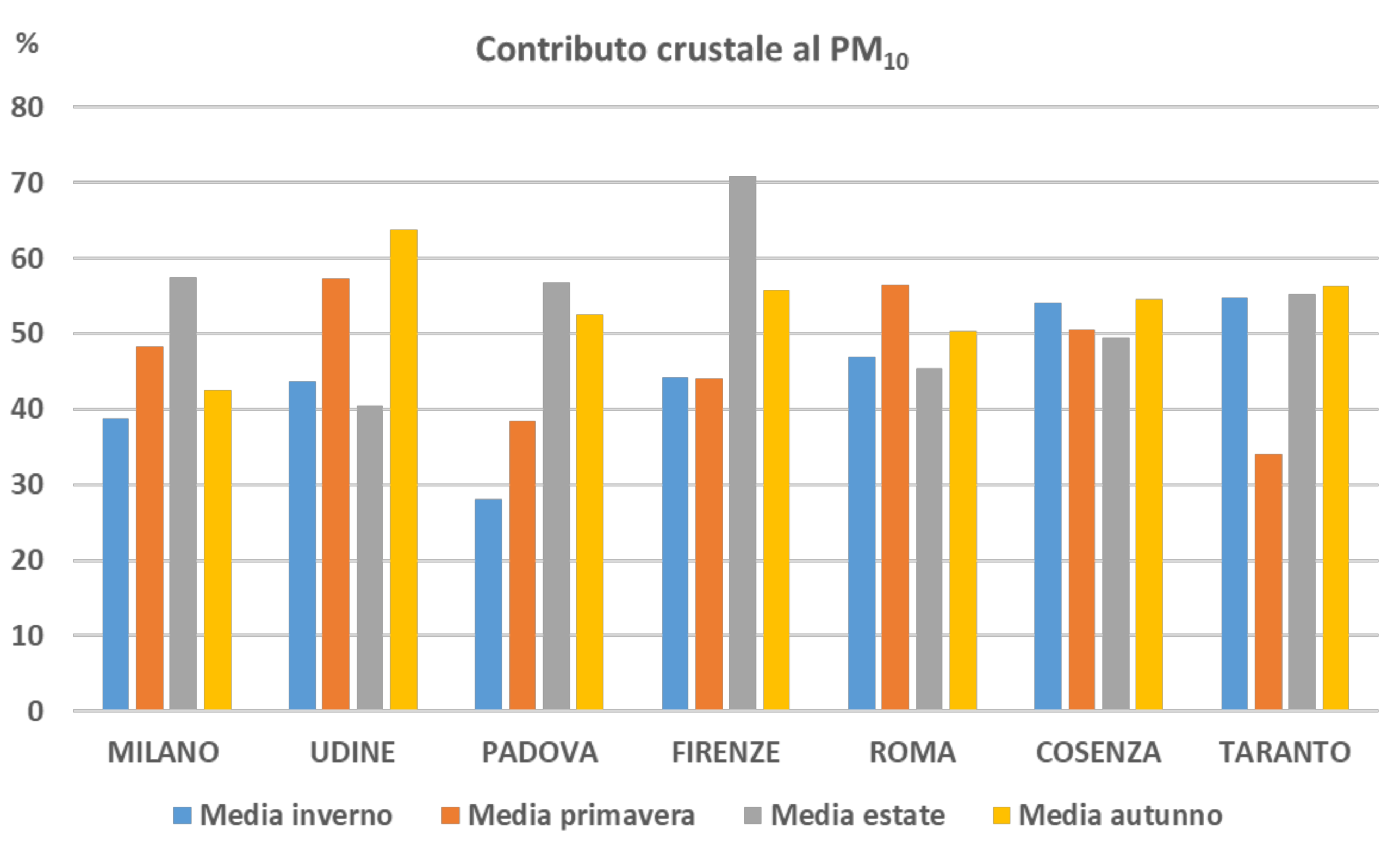
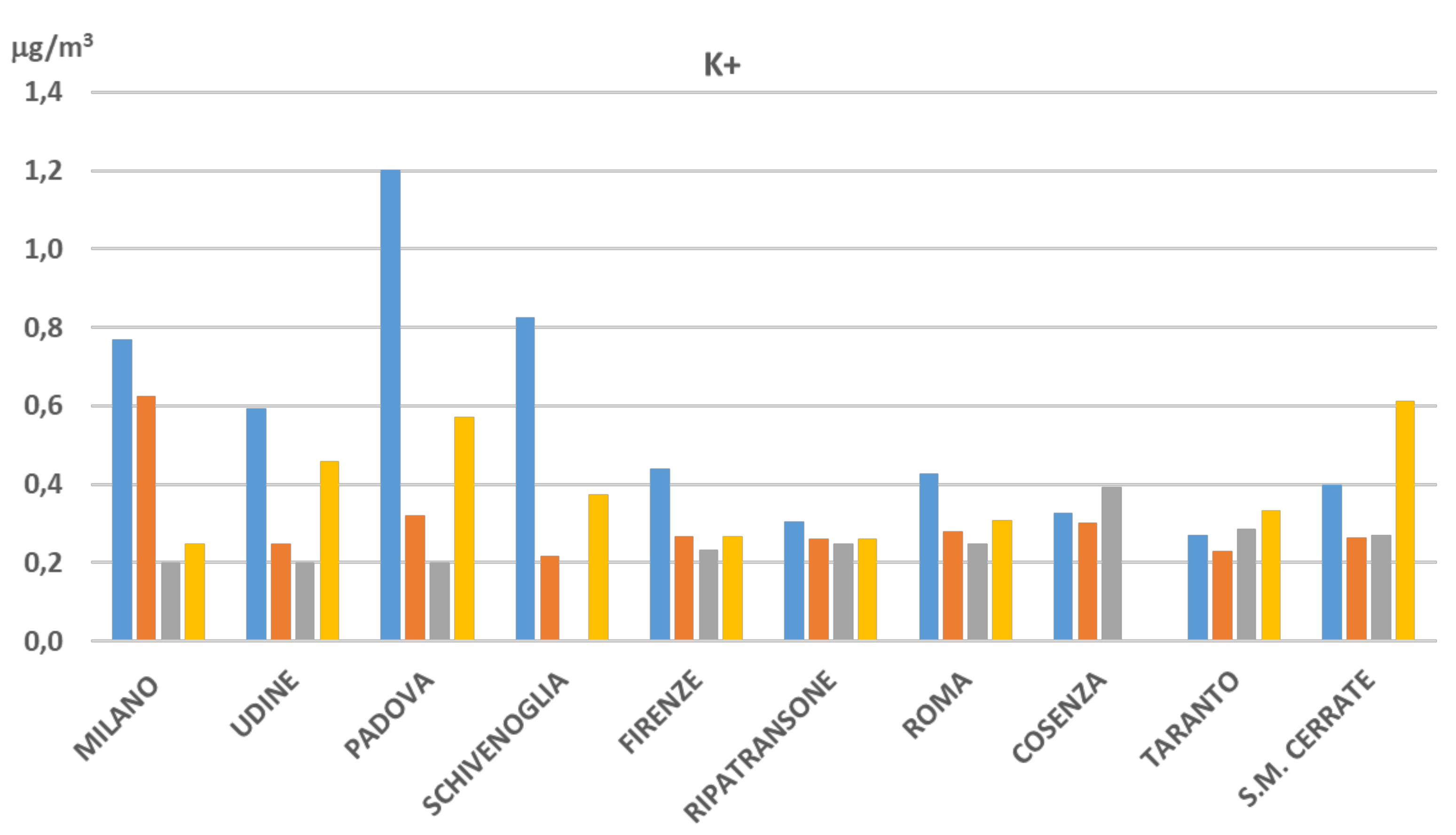
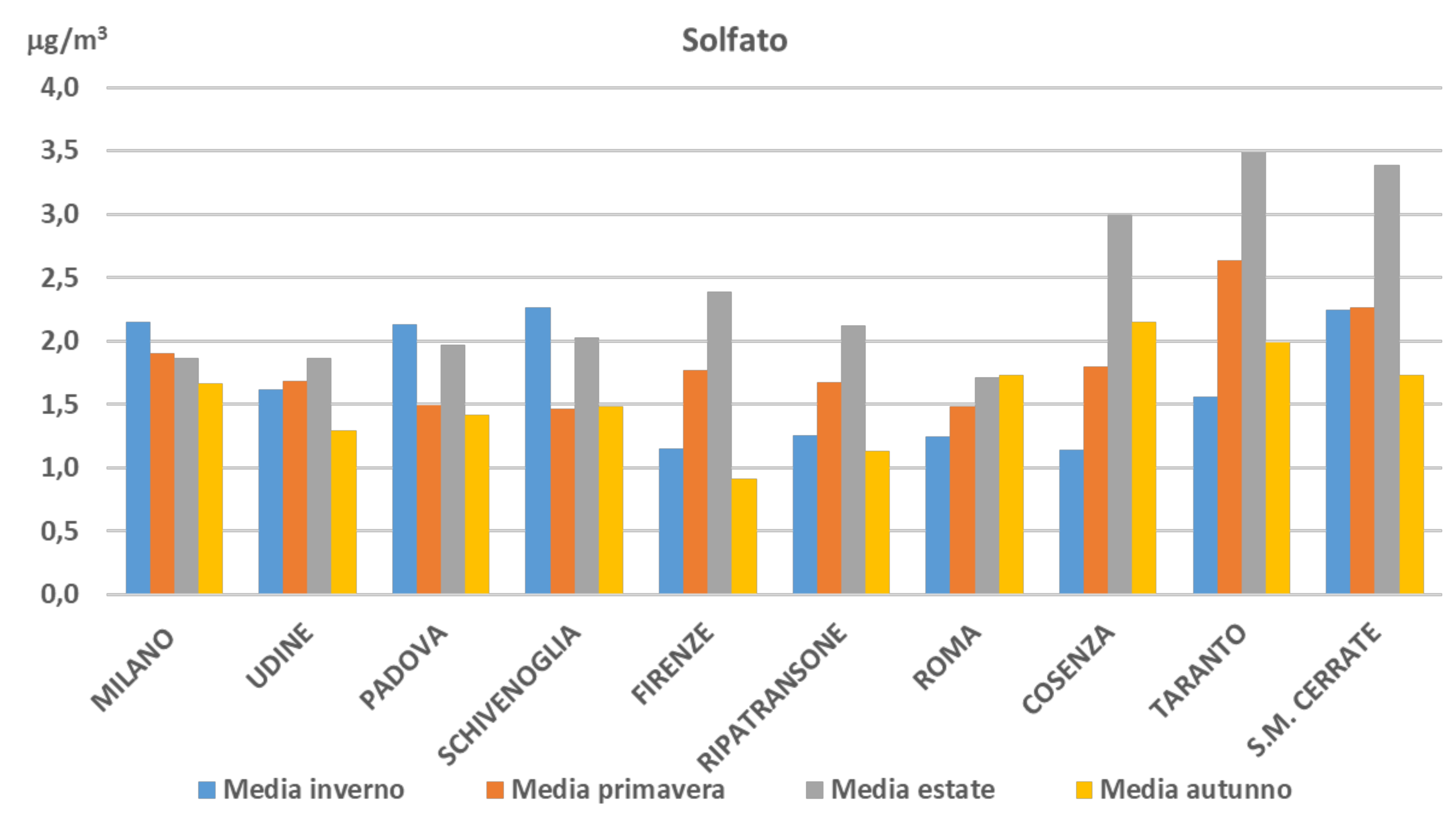
Relazione tecnica relativa alla speciazione del materiale particolato ed alle deposizioni atmosferiche
Francesca Marcovecchio, Mariantonisa Bencardino, Francesco D’Amore, Cristina Leonardi, Maria Concetta Tomasi Scianò.
Introduzione
Con il termine particolato atmosferico o PM (Particulate Matter) si intende l’insieme delle particelle solide e liquide disperse in atmosfera, aventi diametro aerodinamico compreso tra centinaia di micrometri e pochi nanometri. L’oggetto di questa relazione saranno il PM10 ed il PM2.5, ovvero l’insieme di particelle caratterizzate da un diametro aerodinamico inferiore o uguale a 10 e 2.5 nanometri rispettivamente. L’interesse scientifico che da anni è concentrato sulle particelle di PM è dovuto alla loro riconosciuta tossicità. Gli effetti negativi sulla salute umana causati dall’esposizione al materiale particolato atmosferico sono ampiamente documentati nella letteratura scientifica. Tuttavia, la maggior parte degli studi sono basati su misure di concentrazione, mentre l’entità dell’ esposizione e soprattutto gli effetti dipendono in maniera sostanziale anche dalla qualità delle polveri atmosferiche, ovvero dalla loro composizione chimica. La concentrazione in massa del PM e la sua composizione chimica sono dunque i parametri fondamentali per una corretta valutazione non solo della qualità dell’aria, ma anche dell’esposizione a specifiche sostanze chimiche aerodisperse. La speciazione chimica del PM, nelle sue componenti organiche ed inorganiche, costituisce ad oggi la sfida più difficile da affrontare, essendo il PM costituito da migliaia di sostanze di diversa natura che possono reagire tra loro e dare origine a sostanze diverse da quelle originariamente emesse dalla sorgente oppure subire passaggi di stato. Il Progetto Reti Speciali consiste in un accordo di collaborazione finalizzato all’avvio delle reti “speciali” di monitoraggio della qualità dell’aria istituite dal decreto legislativo 155/2010. Tali reti hanno la funzione di raccogliere informazioni aggiuntive rispetto a quelle già regolarmente ottenute dalle reti di monitoraggio regionali, quali la speciazione chimica del particolato, le concentrazioni e deposizioni di mercurio, le deposizioni di IPA e metalli, i precursori dell’ozono e le concentrazioni di altri IPA oltre il benzo(a)pirene. A tal fine, sono stati eseguiti campionamenti ed analisi di speciazione chimica del PM in alcuni siti selezionati, previsti dall’accordo di collaborazione.
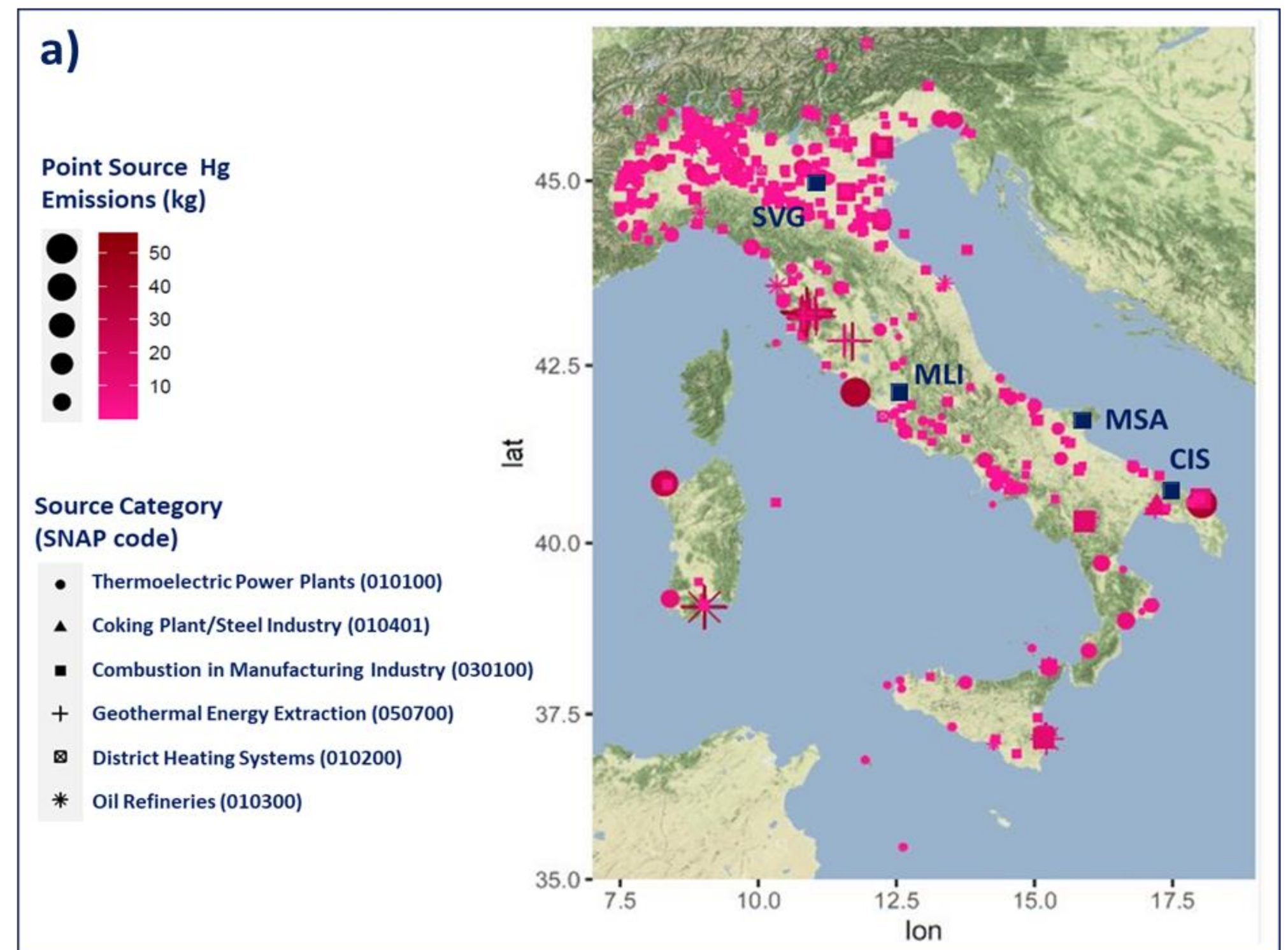
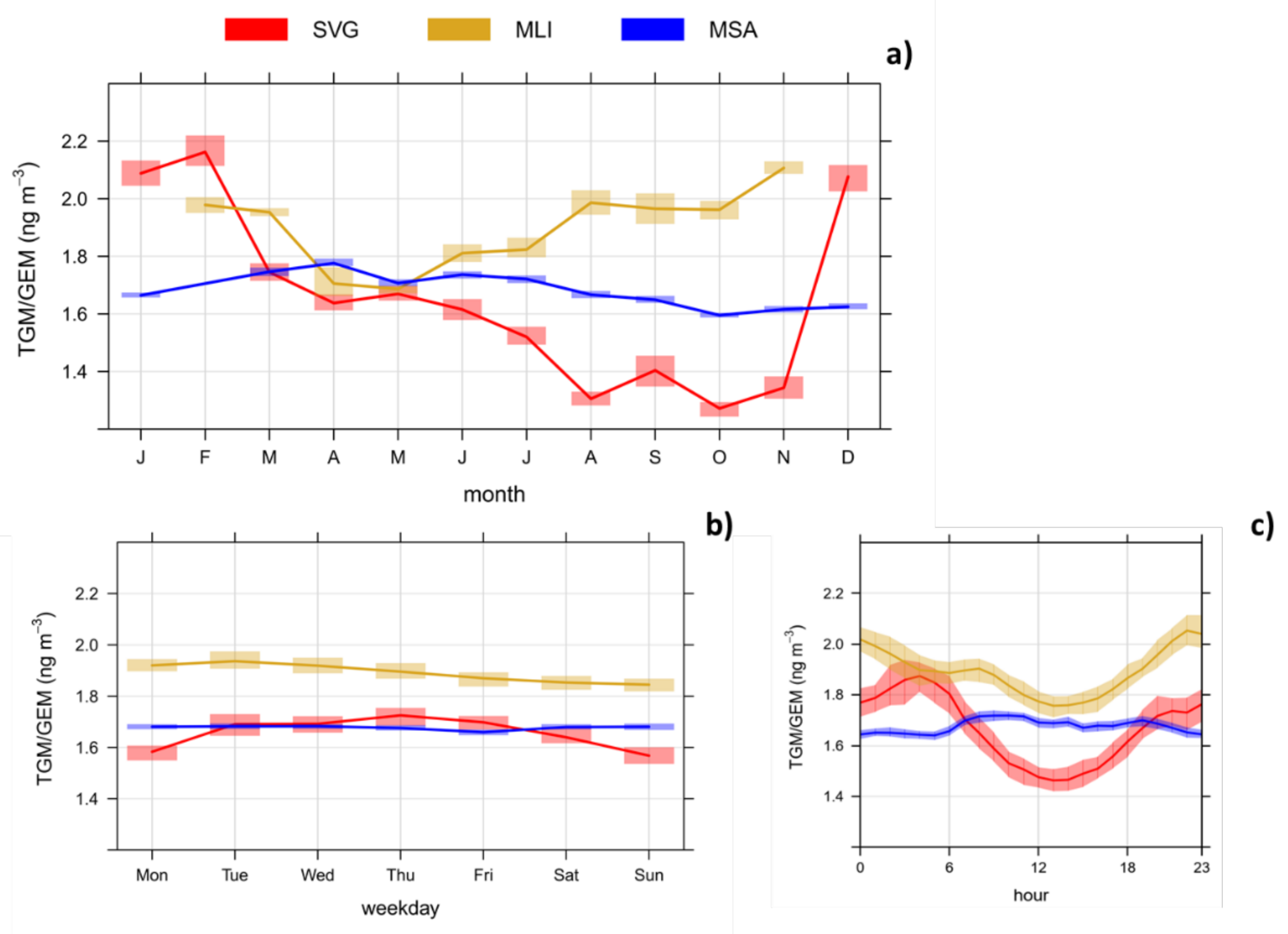
Relazione tecnica sui risultati dei monitoraggi del Mercurio in aria ambiente e nelle deposizioni
Mariantonisa Bencardino, Antonella Tassone, Maria Martino, Francesco D’Amore, Giulio Esposito, Teresa Sprovieri, Carmine Ungaro, Virginia Andreoli, Cristina Leonardi, Francesca Sprovieri, Nicola Pirrone
Introduzione
Il mercurio (Hg) è un elemento naturalmente presente nella crosta terrestre sotto forma di minerale cinabro. Eruzioni vulcaniche, eventi geotermici e incendi rappresentano circa il 10% delle emissioni globali di Hg in atmosfera. Un ulteriore 60% delle attuali emissioni globali di Hg nell’aria proviene da complessi cicli biogeochimici, molti dei quali comportano il ricircolo del Hg di origine antropica precedentemente depositato nel suolo e nell’acqua [UNEP, 2019]. Il contributo rimanente, aumentato nel corso degli anni, è dovuto al suo maggiore utilizzo in varie applicazioni industriali, nonché in vari prodotti. Le fonti con un contributo significativo all’inquinamento da Hg includono centrali elettriche a carbone, cementifici e lavorazioni dei
metalli [UNEP, 2019]. È un metallo pesante altamente tossico e persistente che può essere assorbito e accumulato dagli organismi viventi, con gravi conseguenze sia per gli ecosistemi che per la salute umana. Nella sua forma elementare gassosa, l’Hg è altamente volatile e può essere così disperso in atmosfera e trasportato su lunghe distanze, anche molto lontano dalle sorgenti di emissioni; da qui il riconoscimento dell’Hg come inquinante globale. Una volta depositatosi sugli ecosistemi acquatici e terrestri, nella sua forma organica (metilmercurio), è soggetto a bioaccumulo e biomagnificazione lungo la catena alimentare con il conseguente impatto sulla salute umana. Infatti, il consumo di pesci di grandi dimensioni rappresenta una delle principali fonti di esposizione per l’uomo.
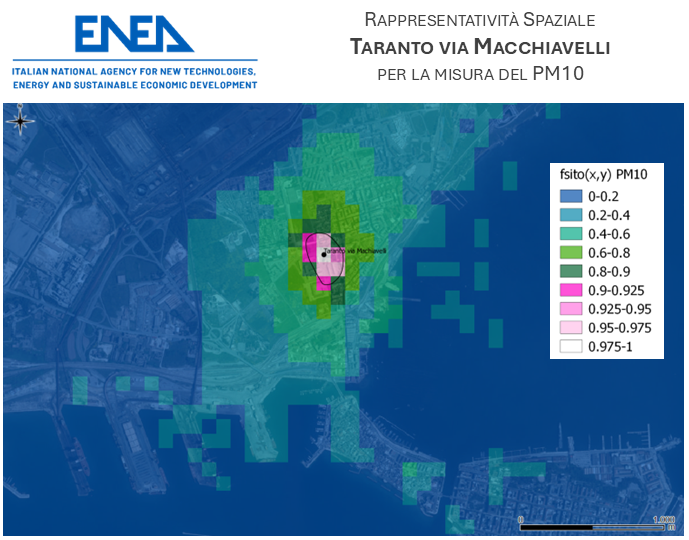
ENEA nell’ambito dell’accordo Reti Speciali
Introduzione
ENEA, nell’ambito dell’Accordo Reti Speciali, ha elaborato quattro metodi di calcolo della
Rappresentatività Spaziale, riportati in relazioni di progetto, rapporti tecnici ENEA [ 1 – 4 ],
pubblicazioni scientifiche su riviste nazionali [5] e internazionali [6-9] e interventi a
convegno [ 10 -11]. I metodi elaborati sono stati messi a disposizione di MASE e Regioni, e
il metodo CSF [3, 7, 8], che si è rivelato essere il più idoneo, è stato utilizzato per calcolare
la Rappresentatività Spaziale di tutti i siti delle Reti Speciali per tutti gli inquinanti ivi
misurati. A seguito della competenza maturata, ENEA ha partecipato fin dall’inizio alle
attività di Fairmode sulla Rappresentatività Spaziale [12-13], e vi partecipa tuttora,
coordinando anche la partecipazione e i contributi delle Regioni al gruppo di lavoro sul
tema (WG8).
[1] Piersanti A., Ciancarella L., Cremona G., Righini G., Vitali L. (2013) Rappresentatività spaziale di misure di qualità dell’aria. Valutazione di un metodo di stima basato su fattori oggettivi. Rapporto Tecnico RT/2013/1/ENEA, https://iris.enea.it/handle/20.500.12079/6649.
[2] Cremona G., Ciancarella L., Cappelletti A., Ciucci A., Piersanti A., Righini G., Vitali L. (2013) Rappresentatività spaziale di misure di qualità dell’aria. Valutazione di un metodo di stima basato sull‘uso di dati emissivi spazializzati. Rapporto Tecnico RT/2013/2/ENEA, https://iris.enea.it/handle/20.500.12079/6650.
[3] Vitali L., Ciancarella L., Cionni I., Cremona G., Piersanti A., Righini G. (2013) Rappresentatività spaziale di misure di qualità dell’aria. Valutazione di un metodo di stima basato sull‘analisi dei campi di concentrazione simulati dal Modello Nazionale MINNI. Rapporto Tecnico RT/2013/3/ENEA, https://iris.enea.it/handle/20.500.12079/6647.
[4] Vitali L., Cionni I., Cremona G., Piersanti A., Righini G. Ciancarella L., (2013) Rappresentatività spaziale di misure di qualità dell’aria. Valutazione di un metodo di stima basato sull‘uso di “BACKWARD TRAJECTORIES”. Rapporto Tecnico RT/2013/15/ENEA, https://iris.enea.it/handle/20.500.12079/6663.
[5] Righini G., Cappelletti A., Cionni I., Ciucci A., Cremona G., Piersanti A., Vitali L., Ciancarella L. (2013). Methodologies for the evaluation of spatial representativeness of air quality monitoring stations in Italy. Energia, Ambiente e Innovazione. Rivista bimestrale dell’ENEA. Anno 59. 1-2 gen./apr. 2013, 60-68. ISSN 11240016, https://www.eai.enea.it/archivio/n-1-2-gennaio-aprile-2013/methodologies-for-the-evaluation-of-spatial-representativeness-of-air-quality-monitoring-stations-in-italy.html
[6] Righini G., Cappelletti A., Ciucci A., Cremona G., Piersanti A., Vitali L., Ciancarella L. (2014). GIS based assessment of the spatial representativeness of air quality monitoring stations using pollutant emissions data. Atmospheric Environment, 97, 121–129, http://dx.doi.org/10.1016/j.atmosenv.2014.08.015.
[7] Piersanti A., Ciancarella L., Cremona G., Righini G., Vitali L. (2015). Spatial representativeness of air quality monitoring stations: a grid model based approach. Atmospheric Pollution Research, 6(6), 953-960, http://dx.doi.org/10.1016/j.apr.2015.04.005.
[8] Vitali L., Morabito A., Adani M., Assennato G., Ciancarella L., Cremona G., Giua R., Pastore T., Piersanti A., Righini G., Russo F., Spagnolo S., Tanzarella A., Tinarelli G., Zanini G. (2016). A Lagrangian modelling approach to assess the representativeness area of an industrial air quality monitoring station. Atmospheric Pollution Research, 7(6), 990-1003, http://dx.doi.org/10.1016/j.apr.2016.06.002.
[9] Vitali L., Righini G., Piersanti A., Cremona G., Pace G., Ciancarella L. (2017). M-TraCE: a new tool for high-resolution computation and statistical elaboration of backward trajectories on the Italian domain. Meteorology and Atmospheric Physics, 129, 629–643, https://doi.org/10.1007/s00703-016-0491-8.
[10] Piersanti A., Cremona G., Righini G., Russo F., Vitali L., Ciancarella L. (2013). Spatial representativeness of air quality monitoring stations in Italy. Poster. In Proceedings of the 15th International Conference on Harmonization within Atmospheric Dispersion Modelling for Regulatory Purposes (HARMO 15), 6-9 May 2013, Madrid (Spain). Editors R. San José and J. Pérez. http://www.harmo.org/Conferences/Proceedings/_Madrid/publishedSections/H15-66.pdf.
[11] Piersanti A., Ciancarella L., Cremona G., Righini G., Vitali L. (2016). Application of a Land Cover Indicator to Characterize Spatial Representativeness of Air Quality Monitoring Stations Over Italy. In: Steyn, D., Chaumerliac, N. (eds) Air Pollution Modeling and its Application XXIV. Springer Proceedings in Complexity. Springer, Cham. https://doi.org/10.1007/978-3-319-24478-5_101.
[12] Kracht O., Santiago J., Martin F., Piersanti A., Cremona G., Righini G., Vitali L., Delaney K., Basu B., Ghosh B., Spangl W., Brendle C., Latikka J., Kousa A., Pärjälä E., Meretoja M., Malherbe L., Letinois L., Beauchamp M., Lenartz F., Hutsemekers V., Nguyen L., Hoogerbrugge R., Eneroth K., Silvergren S., Hooyberghs H., Viaene P., Maiheu B., Janssen S., Roet D. and Gerboles M. (2017). Spatial representativeness of air quality monitoring sites: Outcomes of the FAIRMODE/AQUILA intercomparison exercise. EUR 28987 EN, Publications Office of the European Union, Luxembourg, 2017, ISBN 978-92-79-77218-4, https://doi.org/10.2760/60611, JRC108791.
[13] Kracht O., Santiago J.L., Martin F., Piersanti A., Cremona G., Righini G., Vitali L., Delaney K., Basu B., Ghosh B., Spangl W., Brendle C., Latikka J., Kousa A., Pärjälä E., Meretoja M., Malherbe L., Letinois L., Beauchamp M., Lenartz F., Hutsemekers V., Nguyen L., Hoogerbrugge R., Eneroth K., Silvergren S., Hooyberghs H., Viaene P., Maiheu B., Janssen S., Roet D. and Gerboles M. (2017) First outcomes of the FAIRMODE & AQUILA intercomparison exercise on spatial representativeness. HARMO 2017 – 18th International Conference on Harmonisation within Atmospheric Dispersion Modelling for Regulatory Purposes, Proceedings, 2017 October, 355-359. https://www.harmo.org/Conferences/Proceedings/_Bologna/publishedSections/H18-112-Kracht.pdf.

